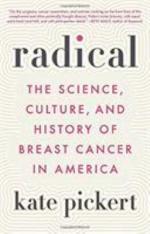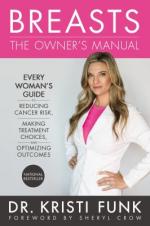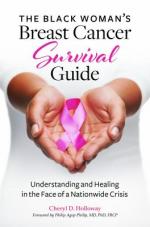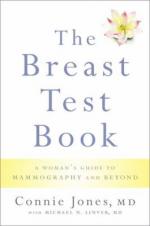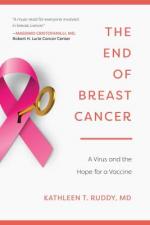October 5, 2020 | sobczakd
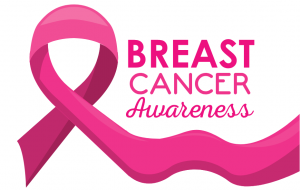
Every year, 42,000 women lose their fight against breast cancer. Breast Cancer Awareness Month raises awareness of the disease and helps provide support to those affected by breast cancer. Due to the COVID-19 pandemic, many women have put scheduling their mammograms on hold. So is it safe to get your mammogram? Doctors and hospitals have put extra precautions in place to ensure the safety of patients. And studies have shown the most effective weapon in the fight against breast cancer is screening. So call your specialist today and don't delay getting your mammogram. Here's some resources to learn more about breast health!
As a health-care journalist, Kate Pickert knew the emotional highs and lows of medical treatment well -- but always from a distance, through the stories of her subjects. That is, until she was unexpectedly diagnosed with an aggressive type of breast cancer at the age of 35. As she underwent more than a year of treatment, Pickert realized that the popular understanding of breast care in America bears little resemblance to the experiences of today's patients and the rapidly changing science designed to save their lives. After using her journalistic skills to navigate her own care, Pickert embarked on a quest to understand the cultural, scientific and historical forces shaping the lives of breast-cancer patients in the modern age. Breast cancer is one of history's most prolific killers. Despite billions spent on research and treatments, it remains one of the deadliest diseases facing women today. From the forests of the Pacific Northwest to an operating suite in Los Angeles to the epicenter of pink-ribbon advocacy in Dallas, Pickert reports on the turning points and people responsible for the progress that has been made against breast cancer and documents the challenges of defeating a disease that strikes one in eight American women and has helped shape the country's medical culture. Drawing on interviews with doctors, economists, researchers, advocates and patients, as well as on journal entries and recordings collected over the author's treatment, Radical puts the story of breast cancer into context, and shows how modern treatments represent a long overdue shift in the way doctors approach cancer -- and disease -- itself.
Most women don't want to hear about breast cancer unless they have it and need to make some decisions, but these days news about breast cancer--the number one killer of women ages twenty to fifty-nine--is everywhere. Hope for a cure abounds. Celebrities have come forward to share their experiences and raise awareness. Chances are you know someone who has had it. But did you know that you make choices every day that bring you closer to breast cancer--or move you farther away? That in the majority of cases, cancer isn't up to fate, and there are ways to reduce your risk factors? That many of the things you've heard regarding the causes of breast cancer are flat-out false? There have been few solid guidelines on how to improve your breast health, lower your risk of getting cancer, optimize your outcomes if you're faced with a diagnosis, and make informed medical choices after treatment. Until now.
Breast cancer is reaching epidemic levels, especially among black women. This survival guide provides tools that women--black women in particular--can use to identify and combat this all-too-common threat. This "what you need to know" guide is unique in its common sense, "laywoman's" approach and particular relevance to women of color. Its premise is simple: ignorance and lack of education about breast cancer signs and symptoms are still all too prevalent among black women. Many women are not informed about resources available for early detection screening and are not referred for mammography screening. They may also receive significantly delayed treatment--especially black women. For those reasons and more, black women with or at risk for breast cancer need an advocate who speaks for them and tells them the truth. They have that advocate in Cheryl Holloway, PhD--and in this book. A breast cancer survivor and cancer researcher, Dr. Holloway draws on her personal experience and research to offer something far different than the usual medical/oncological works. Her book provides support, current information, and practical advice for confronting and beating the disease. The book is divided into four parts. "Dealing with the Basics" explains how breast cancer hits black women harder and discusses the types of breast cancer they may develop, with an emphasis on the most dangerous. The second section offers practical information, such as how screenings work and the meaning of various breast cancer tests. Part three describes treatments, including surgery, radiation therapy, chemotherapy, hormone therapy, combined therapy, and other options. The final section describes how to stay vigilant after the cancer is gone and also discusses other forms of cancer for which black women are at risk, such as lung cancer, colon cancer, and cervical cancer.
Breast cancer is the most commonly diagnosed malignancy in women and the second leading cause of cancer-related deaths in American women. Although cardiovascular-related deaths significantly outnumber breast cancer deaths, breast cancer is arguably the most feared diagnosis among American women. Great strides have been made to heighten public awareness of breast cancer, with particular emphasis on early detection with mammography. Breast radiologists regularly witness the extreme anxiety that just the thought of being diagnosed with breast cancer can cause a patient. This anxious anticipation is often heightened by a lack of knowledge about what to expect from the process of breast imaging evaluation, which is frustrating for both patient and practitioner and can negatively affect the experience. Physicians often encounter patients who have little or no understanding of the reasoning behind the examination or procedure about to be performed-sometimes even up to the day of their breast cancer surgery. Furthermore, most women who undergo breast evaluations will not be diagnosed with cancer. The incidence of breast cancer is only 125.3 per 100,000 women (or 3-6 in every 1,000 screenings), however, symptoms of benign breast abnormalities are quite common and impact many more lives. Accurately diagnosing these non-cancerous conditions can alleviate much anxiety, in addition to helping patients towards a correct treatment plan. The Breast Test Book is a straightforward guide to the process of radiologic breast evaluations. Based on the most current scientific research and best standards of clinical practice, it will help debunk myths, shed light on misinformation, and provide clear facts about what women should expect from these screenings. This improved understanding will ultimately allow patients to play more active roles in their own care and, in the event that a diagnosis is made, give them confidence in their treatment.
Can a mouse virus cause breast cancer in women? Answering that question has become Dr. Kathleen Ruddy's life's work. The End of Breast Cancer is the landmark book that gives an extraordinary glimpse into the history of breast cancer research, and the findings that support the theory that the virus that causes breast cancer in mice, and has also been found in rats, cats, dogs, and monkeys plays a significant role in 40-94% of human breast cancer. Researchers contend that we are one step away from having final proof of this. Once we know the cause, then we can move forward to develop a preventative vaccine. The first and only breast cancer specialist to compile this encyclopedic research in one volume, Dr. Ruddy writes: "If there's a virus that causes breast cancer, and a safe and effective vaccine that can prevent this disease, we need to know about it now, not in another 100 years." The End of Cancer represents the culmination of Ruddy's research findings and the breakthroughs that are happening every day to unravel the mystery. We may well witness in our lifetimes the eradication of breast cancer.
